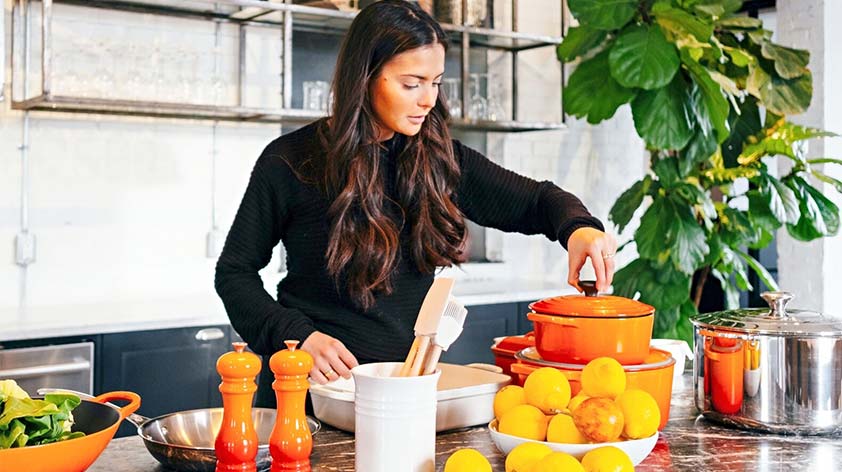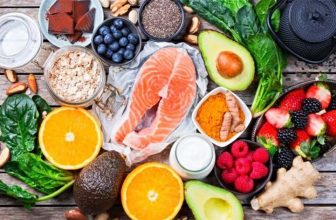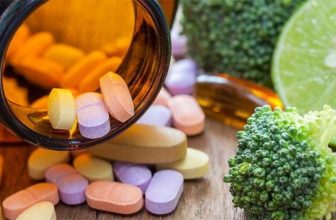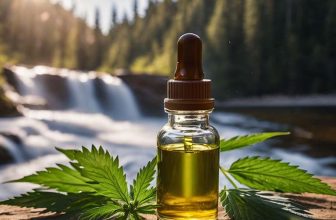
Interest in the cannabis compound cannabidiol (CBD) is at an all-time high, driven in large part by celebrity endorsements and scientific research establishing its potential as a therapeutic health supplement. Today, CBD is taken sublingually, vaped, and applied topically on sites of mild injuries like sprains and welts. But perhaps the fastest-growing trend in the cannabinoid space is the infusion of CBD into food and beverages — both in the restaurant industry and at home in the kitchen. Contrary to popular speculation, cooking with CBD oil isn’t difficult at all, provided aspiring cannabis cooks follow a few important rules of thumb. In this post, we go over CBD Oil: 4 Benefits & Common Mistakes when Cooking with CBD!
1. Why Cook with CBD Oil?
There are a number of benefits to cooking with CBD oil for both cannabis greenhorns and long-time devotees. Some of the most notable advantages include:
- Saving money on CBD edibles by buying isolates or concentrates in bulk and infusing manually, rather than buying premade edibles
- Maintaining complete control over potency by experimenting with different amounts before settling into a personal “sweet spot.” This is particularly important for beginners
- Constantly having new and creative ways to consume CBD to avoid monotony and (for some palates) an unpleasant aftertaste
- Adding the health-positive potential of CBD — including its anti-inflammatory properties and promotion of healthy circadian rhythms — to an otherwise plain and boring snack or drink
2. Using Subpar CBD Products
Many aspiring DIYers opt to save money by buying cheap CBD isolates or concentrates to save money while testing the waters of CBD infusion. This is generally a bad idea for two reasons.
As with any industry, consumers always get what they pay for — and low-cost CBD products are consistently lower in product potency. These inferior CBD products are the prime mover for CBD skeptics’ generalization that cannabinoids are a modern-day equivalent to snake oil, given they appear not to have any positive neurophysiological effects whatsoever.
Another reason for avoiding cheap CBD is their high amounts of leftover residue from subpar extraction processes. This causes the product to have a poor aftertaste, and makes for unenjoyable food when used in the kitchen.
In order to avoid the issues that come with subpar CBD, consumers would do well to buy only from reputable companies. We found that Crescent Canna is a good example of a CBD company that makes use of third-party testing to certify their product claims of purity, potency and ethical sourcing and formulation practices. Buying only products with valid certificates of analysis (COAs) will ensure the best possible infusion experience in the kitchen.
3. Extracting Cannabinoids Without Decarboxylation
Many first time users of CBD in the kitchen opt to extract their cannabinoids directly from plant matter, which is fine as long as said plant matter is properly decarboxylated or “decarbed” before extraction. All too often beginners simply purchase high-CBD hemp and go straight to olive oil, solvent or steam extraction without first decarbing their buds and flower, creating a bitter and low-potency CBD extract unsuitable for cooking.
To avoid this issue and get as much CBD out of cannabis plant matter as possible, first activate your cannabinoids so that they bind to lipids by spreading the cannabis over a baking tray and heating it in the oven at 225°F (107C) for about 45 minutes. After decarbing, any method of home extraction will draw out much more CBD and a lot less unwanted compounds like flavonoids or chlorophyll. This results in significantly better taste and potency, allowing for greater usability in the kitchen.
4. Using too Much Heat
In order to avoid losing food quality in terms of flavor and nutritional value — whether infused with CBD or not — it’s always necessary to manage how much heat is used. As with common ingredients like butter or oil, CBD has specific temperatures at which it boils and degrades. When pushed beyond its boiling point, CBD can lose its beneficial properties, become unpleasant to taste or even evaporate, essentially resulting in an elaborate waste of money.
When cooking with CBD, a good rule of thumb is to never exceed its boiling point, which is an ample 356°F — more than enough for a wide variety of dishes. This ensures no wastage of cannabinoids and retention of CBD’s full therapeutic potential.
Have you tried cooking with CBD? What benefits are you experiencing? Let us know in the comments below, and join in the conversation on Facebook, Twitter & Instagram. You can find out more about CBD oil products here, and check out our 25% CBD oil review. We also have much more info on CBD!









